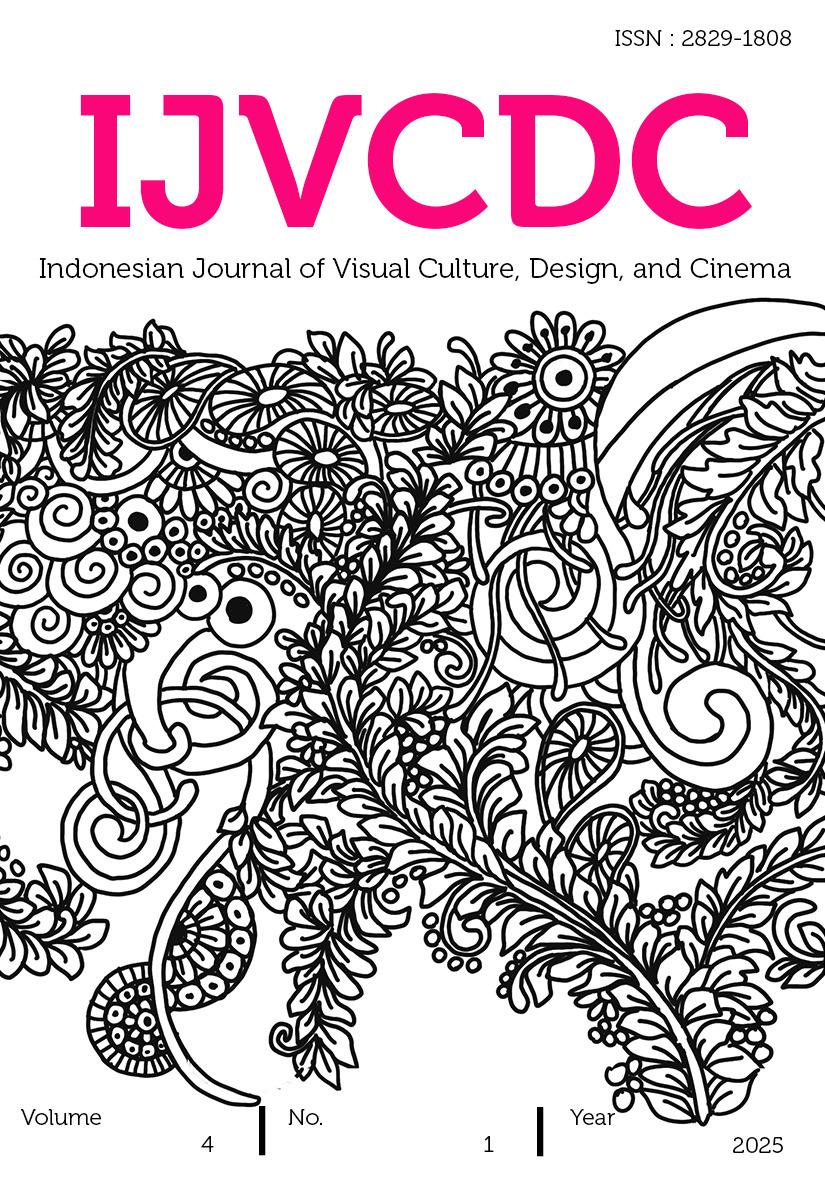Biophilic Design in Bedrooms that Supports the Process of Holistic Art Therapy
DOI:
https://doi.org/10.21512/ijvcdc.v4i1.13357Keywords:
biophilic design, bedroom, holistic art therapy, emotional recovery, therapeutic interior designAbstract
Emotional health and psychological well-being are essential considerations in the design of private spaces, particularly bedrooms. A bedroom serves not only as a place for rest but also as a space for deep personal expression. This study explores the integration of biophilic design elements in bedrooms as a strategy to support holistic art therapy focused on emotional healing. Art therapy is viewed as a holistic approach that utilizes creative expression as a means of psychological recovery. In this context, biophilic design contributes by creating a natural and calming atmosphere that fosters emotional balance. This research employs a qualitative approach through literature review and interior design analysis, incorporating natural elements such as daylight, plants, natural textures, and organic colors. The findings indicate that integrating biophilic design into bedrooms can create environments that effectively support art therapy activities, enhance relaxation, and strengthen the emotional connection between individuals and their personal space. These insights open new opportunities for developing interior design strategies that promote psychological healing and holistic well-being through a more emotionally responsive design approach.
References
Alvarsson, J. J., Wiens, S., & Nilsson, M. E. (2010). Stress recovery during exposure to nature sound and environmental noise. International Journal of Environmental Research and Public Health, 7(3), 1036–1046. https://doi.org/10.3390/ijerph7031036
Bringslimark, T., Hartig, T., & Patil, G. G. (2009). The psychological benefits of indoor plants: A critical review of the experimental literature. Journal of Environmental Psychology, 29(4), 422–433. https://doi.org/10.1016/j.jenvp.2009.05.001
Browning, W. D., Ryan, C. O., & Clancy, J. O. (2014). 14 patterns of biophilic design. Terrapin Bright Green, LLC.
Curl, K. (2008). Assessing Stress Reduction as a Function of Artistic Creation and Cognitive Focus. Art Therapy, 25(4), 164–169. https://doi.org/10.1080/07421656.2008.10129550
Dzhambov, A. M., Hartig, T., Tilov, B., Atanasova, V., Makakova, D. R., & Dimitrova, D. D. (2018). Residential greenspace is associated with mental health via intertwined capacity-building and capacity-restoring pathways. Environmental Research, 166, 377–384. https://doi.org/10.1016/j.envres.2018.06.016
Evans, G. W. (2003). The built environment and mental health. Journal of Urban Health, 80(4), 536–555. https://doi.org/10.1093/jurban/jtg063
Gifford, R. (2007). Environmental psychology: Principles and practice (4th ed.). Optimal Books.
Hartig, T., Kylin, M., & Olausson, H. (2014). Health benefits of nature experience: Psychological, social and cultural processes. In J. H. V. Thomas & M. C. Williams (Eds.), Nature and health: A scientific review (pp. 191–217). Oxford University Press.
Joye, Y. (2007). Architectural lessons from environmental psychology: The case of biophilic architecture. Review of General Psychology, 11(4), 305–328. https://doi.org/10.1037/1089-2680.11.4.305
Kaplan, R., & Kaplan, S. (1989). The experience of nature: A psychological perspective. Cambridge University Press.
Kellert, S. R., Heerwagen, J. H., & Mador, M. L. (2008). Biophilic Design: The Theory, Science, and Practice of Bringing Buildings to Life. Wiley.
Kellert, S. R., & Calabrese, E. F. (2015). The practice of biophilic design. Retrieved from https://www.biophilic-design.com
Largo-Wight, E., Chen, W. W., Dodd, V., & Weiler, R. (2011). Inside-out: Naturalizing indoor spaces with plants improves health-related quality of life. Journal of Environmental Psychology, 31(4), 442–450. https://doi.org/10.1016/j.jenvp.2011.02.002
Malchiodi, C. A. (2012). Handbook of Art Therapy (2nd ed.). Guilford Press.
Rollero, C., & De Piccoli, N. (2010). Place attachment, identification and environment perception: An empirical study. Journal of Environmental Psychology, 30(2), 198–205. https://doi.org/10.1016/j.jenvp.2009.12.003.
Stuckey, H. L., & Nobel, J. (2010). The Connection Between Art, Healing, and Public Health: A Review of Current Literature. American Journal of Public Health, 100(2), 254–263. https://doi.org/10.2105/AJPH.2008.156497
Ulrich, R. S. (1984). View through a window may influence recovery from surgery. Science, 224(4647), 420–421. https://doi.org/10.1126/science.6143402
Downloads
Published
How to Cite
Issue
Section
License
Copyright (c) 2025 Octavianus Cahyono Priyanto

This work is licensed under a Creative Commons Attribution-NonCommercial-ShareAlike 4.0 International License.







